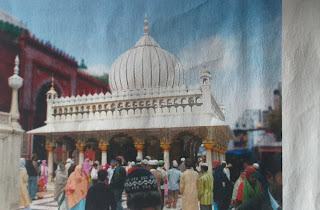History and civics ch 7 The making of composite culture Question answer |Part 2| Bhakti movement:- Tech World
HISTORY AND CIVICS CH 7 THE MAKING OF COMPOSITE CULTURE QUESTION ANSWER PART- 2| BHAKTI MOVEMENT:- TECH WORLD
B. Answer the following questions.
Q1. How did the Bhakti movement help reduce social evils?
Answer:- the Bhakti movement help reduce social evils by promoted cast quality and also preached the equality of men and women. It also put a check on Hindus becoming Buddhist aur jains to escape social discrimination. Nayanar and Alwar Saints composed Hymns that tell us that Saints came from various caste. There where are brahmins and non brahmins including shudras and untouchables.
Q2. Mention Four Points of similarity between the Alvars and nayanar.
Answer:- The Four Points of similarity are:-
Both the alvars and nayanars preached devotion to a personal God.
Both rejected elaborate rituals.
Both the movements used the Tamil language for composing devotional songs.
They attacked Buddhism and Jainism both of which had in incomparated rigid rituals in their practice.
Q3. Write briefly on sufism. mention one difference between the ideals of two popular Sufi orders in India.
Answer:- the sufis spread their message through devotional singing discussions and mentoring of discipline. The sufis preached devotion to God and brotherhood among men. They believed in one God. The word Sufi is derived from suf meaning wool. The sufis were so called because they wore coarse garments made of wool. The christis kept away from politics and Suhrawardis accepted important political posts.
Q4.Mention four similarities between the bhakti and Sufi.
Both the bhakti and Sufi movement give importance to the need for a saint or a pair to guide their followers.
They spread their message through devotional singing.
They believed in Union with God.
The scents of both the movements did not believe in complex rituals.
Q5. Write a note on Kabir.
Answer:- according to Legend Kabir was brought up by Muslim we were after being abondoned by his mother in Varanasi. He was influenced by teaching of several Hindu Saints Sufi saints and mahayana Buddhism as well. He went on to become one of the leading saints of North India he had followers from all section of society and from among the Hindu and the Muslim. Kabir followers were called Kabir panthis. Kabir believed that god is formless and one even through different religious groups give them different name and forms.
Q6. Discuss the main teachings Of Guru Nanak.
Answer:- Guru Nanak rejected caste discrimination Idol worship and rituals he laid stress on character and conduct and need for a Guru to provide guidance he also allowed women to join the order. He preached that god is without form and his will is expressed through the Gurus word. He advised his followers to meditate upon the name of God for peace and ultimate salvation the devotees gathered in building called Dharamshala. Dharamsala usually had a community kitchen known as langur where people from all sections of society could it together.
Q7. Write about development in the following fields during the Sultanate Period.
Answer:- (a) Regional Literature
Turks made Persian with the official language of the Delhi sultanate Amir khusrau a great poet musician and historian of the time created a new style of Persian it was called Sabha Q Hindi. The use of regional languages by Sufi and bhakti saints help these languages to flourish great works of regional literature were produced. These included the work of vidyapati in Mythili chandadi 10 in Bengali Namdev in Marathi komban in Tamil and Guru Nanak in Punjabi. The translation of the guitar and The Puranas into regional languages allowed the common people to read these works in new language called Urdu evolved Hindi Army camps due to the mixing of Persian with regional languages. Urdu came to be widely used specially in towns and cities.
(b) Architecture
The Indo Islamic style of architecture evolved in India due to the mixing of Arabic and Persian styles with Hindu and Buddhist style. The sultan's build mosque places fort and Towers in this new style. Arches and domes commonly used in Central Asian architecture where used to construct large halls without Pillars. Floral and geometric patterns including Hindu Moti first like the bail Swastik and Lotus were used for the decoration of building surfaces.
(c) Music
During this period brought with name the musical traditions of Central Asia they introduced new musical instruments such as the Nawab and this sarangi. The rulers and Nobel encouraged musical gatherings regards which formed the basis of Indian classical music begin to be composed Amir khusrau is said to be invented the Sitar also introduced some ragars and popularized a new form of Sufi devotional singing known as Quawali.


0 Comments